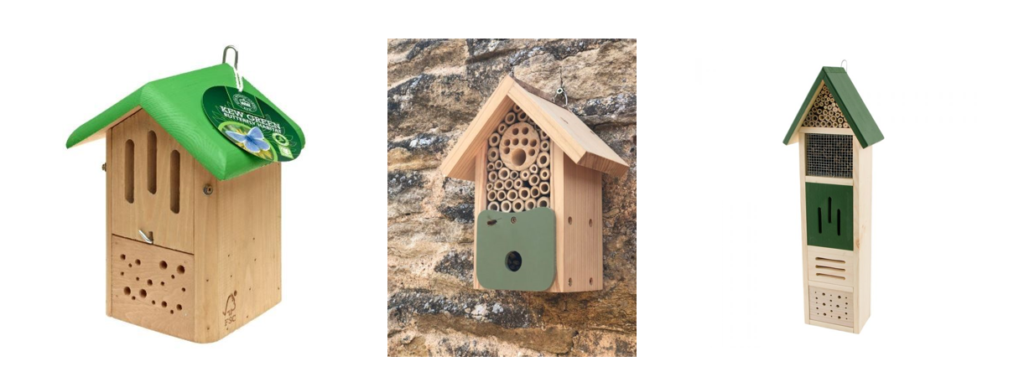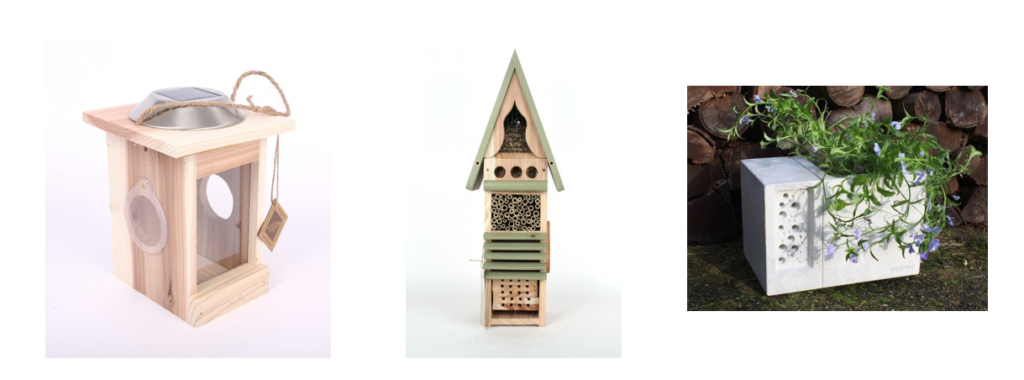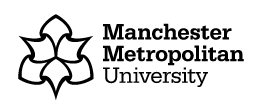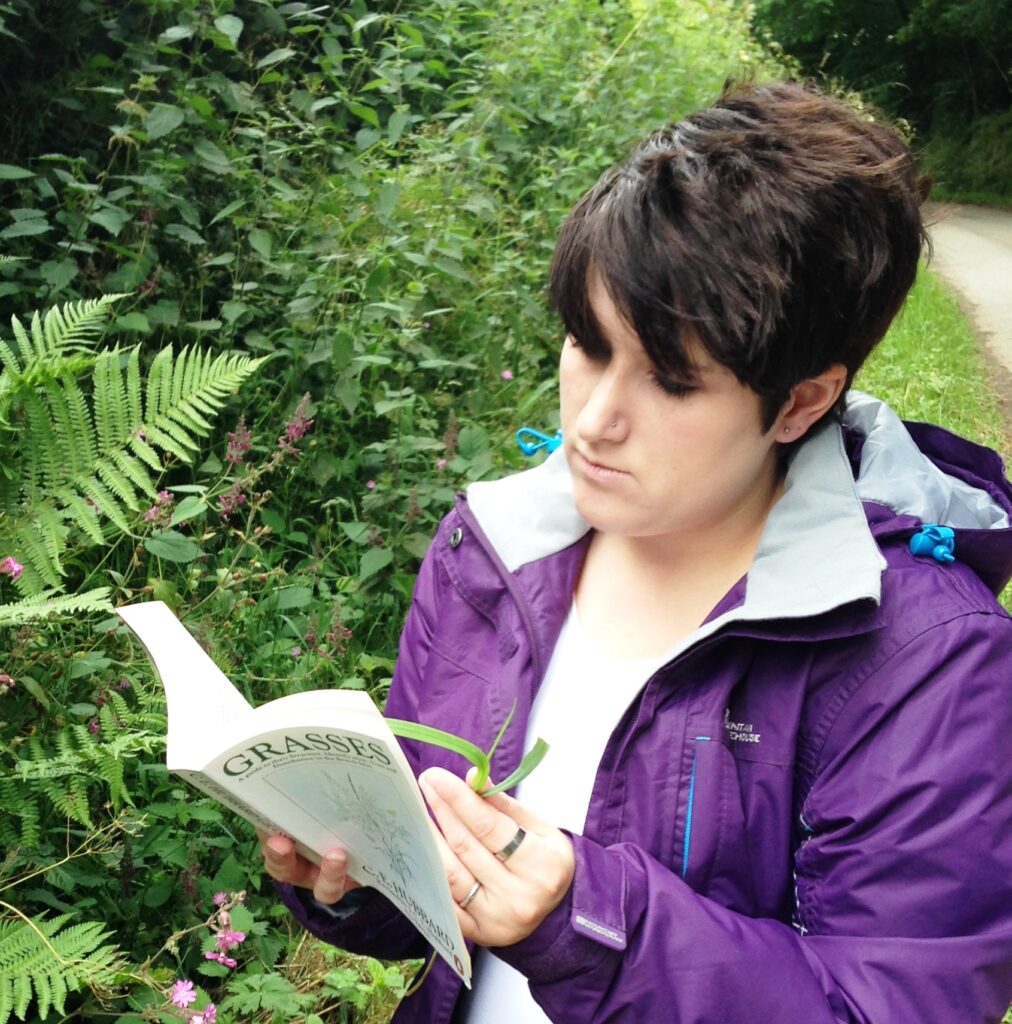
The Professional Voices blog allows people within the industry to share their thoughts on a particular topic. Today, we hear from Dr Emma Coulthard, from Manchester Metropolitan University, who was seen on a recent One Show episode, and Jenny Bailey, co-founder and author at Tales from Mother Earth.
What conveying nature means
Emma:
My passion is engaging the next generation of scientists and conservationists. I see it as my responsibility to help spread awareness of current issues in the field of ecology and conservation, with the hope that even a few people become more knowledgeable on the issues facing us in these uncertain times.
If you have an interest in wildlife you’ll likely already know that we are suffering from some serious losses of species globally due to over-exploitation and habitat destruction, only exacerbated by climate change. One the groups that often get forgotten about by the public are insects, despite their massive importance in our daily lives.
Insects and other invertebrate groups play an essential role in ecosystems, not only by providing services such as pollination and pest control, but also by serving as food to numerous groups such as birds, bats and other mammals. Without insects our ecosystems would simply collapse, and worryingly we are seeing some alarming declines in many species’ numbers across the globe.
In the UK alone we have seen declines in a third of all bee and hoverfly species, 76% of UK butterflies and around a third of our moths, all of which are invaluable to us as pollinators. My research has focused on trying to identify the ecological traits which make species most vulnerable to decline, as well as investigate the effect of landscape change on their populations nationally. I currently work in collaboration with Rothamsted Research Institute, using their valuable moth trap network, which has run for over forty years and produced huge amounts of data.
Jenny:
As a mother of two boys, now 11 and 9 years, I am very aware of the importance of conservation and doing all we can to nurture and encourage the next generation.
Children are our future and one day will be the ones looking after our planet. We need to encourage and engage them with the wonders of the natural world so they can cherish and protect it for future generations to enjoy. When we connect with nature there are a multitude of benefits for us both physically and mentally. For children these benefits increase even further as their levels of confidence, creativity, well-being, curiosity and happiness rise dramatically. Through engaging with nature, a life-long love of learning can be sparked into action and amazing things can develop.
As a parent, I relish the opportunity to show my children spectacles in nature that will open their eyes to the wonder that is 'just outside!' Sometimes, it's as if I can see their brain expanding as their eyes get bigger with wonder and excitement! Simple examples of this are all around us. Recently, when we were walking outside our house, my neighbour caught his lawn mower power cable on a large stone in the his front garden. With one pull it lifted up in front of us to reveal the most amazing ants nest, complete with lots of different chambers dug into smallest of spaces between the rock and the earth. We all watched in wonder as the ants frantically began moving their eggs and grubs to safety and even spotted the queen moving about in the chaos. Another example, was when we spotted a spiders nest in the bushes alongside a canal walk in late summer. With closer inspection we all realised that the sack in the middle of the web was moving as it was full of tiny spiderlings. These are just some of the amazing and beautiful elements that the natural world throws our way all of the time, that we can learn from and be lucky enough to witness. Just by watching a bee on a flower can teach you so much. Soon you'll comprehend that that single life form has a meaning for its life and has a detailed plan for what it has to achieve that day - usually survival. Isn't it wonderful to know that these little moments in nature are happening constantly around us. Everywhere we look you can find the struggles of life and death as a multitude of animals and insects continue their daily or nightly pursuits and I for one feel privileged to witness this and also to show my children the glories of the natural world in this way.
It's so true, when we walk into the wild and take that opportunity to pause, stop and listen, you can see and hear so much. Given the opportunity your eyes can open to witness so much more than you thought possible, and your hearing increases to take in all of the amazing sounds around you. Have you heard the dawn chorus recently? Or taken a drive in the countryside at dusk purely to see what wildlife you may spot? These pursuits are so much fun and can be so rewarding for everyone. I take every opportunity I can to share these and many more experiences with my children as I know how much we all value them. It enhances our love of the natural world and gives us hope that all will be well.
Wildcare and wildlife
We asked the team what they thought of ecology and the conservation of wildlife. Here are a couple of thoughts!
For me, supporting ecology and conservation projects, and working together to protect the natural world is critical for our health and wellbeing, for the creatures we live alongside, and for the variety of diverse and incredible habitats on this earth. I want to believe my children and generations to follow can live in and enjoy a recovering healthy and thriving planet, if we all act swiftly and thoughtfully now.
Georgie
The environment is a complex system of organic and inorganic components. There is a fine balance to be maintained. We, as a species, must acknowledge the consequences of our activities. Conservation is a global effort that needs to be supported by everyone, across all nations and all ages. We should carefully nurture the ability to live in a way that is sympathetic to our surroundings. This is possible by taking an active interest in species, habitats, and interactions.
Julia
What you can do to help

Emma:
Many people ask me what they can do to help with slowing the declines of insects, and there are lots of things you can do to help out.
Tend to your garden and green spaces: Planting more flowering plants, especially native UK species in your gardens is one great action. This will help provide nectar resources for insects in your area and improve their chances of survival. You can get involved with your community to create a connected mosaic of resources for species.
Minimise light pollution: If you have an outdoor light save yourself electricity by switching it off when it's not in use. Nocturnal insects, such as moths, will also benefit from this.
Provide a home: You can offer a space for insects to live by creating nesting sites. These can be quite simple structures that can be used for educational purposes or more complex set-ups that offer many species a home. If you can, leave an area of your garden to nature! A good example of this is the Highgrove stumpery, which can be emulated by creating a stack of logs, and lining beds with sustainably sourced branches. The time for tree pruning is now - you can easily keep some of the branches - these will provide good beastie hunting areas.
Avoid peat: Peat is generally regarded as a non-renewable resource as it takes a rather long time to form. This alone is a good reason to stop using it. Coupled with that is the fact that it is an invaluable habitat for insect species. Alternatives such as bark, wood fibre, and coir are available, with any alternative being labelled as 'peat free'.
Avoid pesticides: These chemicals can have a devastating impact on insect populations, so if you can find an organic approach or a way that rationalises pesticide use, this will help a great deal.
Keep an eye out for non-native species: Not only can these be detrimental to plant population, they can also have a negative impact on our native insect species. Invasive species can be imported on plant stock and by other means.
We need to know more about species: You can get involved by learning more about wildlife and starting to record species that you see. Any data that we can gather on insects helps us to monitor their populations and make informed decisions for their conservation.
It can feel like a challenging task to get involved in recording wildlife, but there are many social media groups dedicated to getting people into species identification and surveying. For those who are already getting out there to recording, but want to advance their skills, the Field Studies Council offer a range of identification courses in all kinds of groups.
As part of my job as Senior Lecturer in Ecology at Manchester Metropolitan University I run a part-time programme dedicated to biological recording, which runs in collaboration with the Field Studies Council and uses their expert tutors to deliver a unique and customisable programme for students. Our programme offers a Postgraduate Certificate in Biological Recording, and an MSc in Biological Recording and Ecological Monitoring. Both these courses have an outstanding reputation nationally and have helped hundreds of graduates gain invaluable skills in surveying and identification of species and habitats.
If you are interested in studying with us on the MSc you can drop us an email at [email protected], or go to our website to look at the courses we offer. If studying for a formal qualification isn’t for your right now, try to get involved with local and online groups who survey wildlife in your area. You might just catch the bug for it!
Inspire the young - gift a habitat or study centre

Bee Barn - Attract solitary bees and other pollinators.
Elba Insect Tower - Give shelter to a variety of insect species.

Insect Study Tower - Put in place an interactive insect study centre with four habitats.
Beepot - Provide safe nesting for solitary bees and space for nectar rich flowers.
About the Authors

Dr Emma Coulthard is a senior lecturer in Ecology and Biological Recording Programme Leader at Manchester Metropolitan University

Emma specialises in the possibility of moths as pollinators of UK flora, and comparisons of nocturnal visitations with diurnal systems. Her previous research has included; analysis of generalised pollination systems in calcareous grassland, nocturnal visitation of moths to UK hedgerow flora and the use of hedgerows as 'wildlife corridors' by moths in intensive farmland landscapes.
Follow Emma on Twitter, Research Gate and LinkedIn, and follow MMU on Facebook, Twitter and LinkedIn.

Jenny Bailey - Co-founder and Author at Tales from Mother Earth
Follow Tales from Mother Earth on Twitter, Facebook, and Instagram
By compiling a realistic and touching animal and insect series of children's picture and audio books, the team at Tales from Mother Earth aim to raise awareness among the young, highlighting the current threats our wildlife is facing from erosion of natural habitat, climate change and plastic pollution. Phoebe the Bee is our first story which we hope will ignite the conservationist in all who read it and empower them to help in some way.


